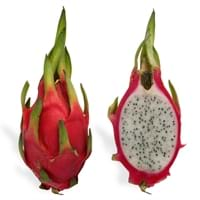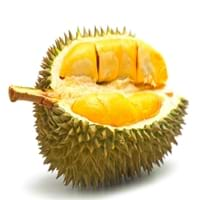Health Benefits
Anti-oxidant properties, Anti-aging benefits, Maintains healthy cholesterol level, Weight loss properties
Anti depressant, Boosts immune system, Cancer prevention, Heart care, Reduces stress
General Benefits
Helps in weight loss, Suppresses Arthritis
Anti oxidant properties, Anti-inflammatory properties, Boosts immune system, Controls blood pressure, Controls blood sugar levels, Digestive aid, Flu treatment, Strengthens bones
Skin Benefits
Anti-aging benefits, Heals sunburn, Treatment of acne
Anti-aging benefits, Brightens and lightens complexion
Hair Benefits
Treatment of colored hair
Promotes longer and healthier hair, Protects hair
Allergy Symptoms
NA
Diarrhea, Headaches, Hives, Nasal congestion, Red rash, Runny nose, Vomiting
Side Effects
NA
Affects blood glucose levels, Nausea, Stomach pain
Lactating Women
Not Available
Yes
Best Time to Eat
Any time except an hour after meal, Don't consume at night and before bed
Along with meal, As a snack in the late afternoon, Don't consume at night and before bed, Morning time (before lunch)
Vitamin A (Retinol)
Not Available
Vitamin B5 (Pantothenic Acid)
Not Available
Vitamin B6 (Pyridoxin)
Not Available
Vitamin B9 (Folic acid)
Not Available
Vitamin C (Ascorbic Acid)
Calories in Fresh Fruit with Peel
Not Available
Calories in Fresh Fruit without Peel
Not Available
Calories in Frozen Form
Not Available
Calories in Dried Form
Not Available
Calories in Canned Form
Not Available
Not Available
Type
Berry, Citrus, Fruit vegetable, Melon, Tree fruit, Tropical
Tree fruit, Tropical
Season
Early fall, Summer
Monsoon
Varieties
Selenicereus megalanthus and Hylocereus polyrhizus
D24, D99 (Gob kecil), D123 (Chanee), D145 (Beserah), D158 (Gan Yau), D159 (Monthong), D169 (Tok Litok), D188, D189, D190, D163 (Hor Lor) and D164 (Ang Bak)
Color
Magenta, Pink
Green
Inside Color
White
Yellow
Taste
Bland
Creamy, Sweet
Origin
Central America, Mexico
South-Eastern Asia
Grows on
Trees
Not Available
Climatic Conditions
NA
Hot, Humid
Facts about
NA
- 1 kg of durian contains 1350 calories which may cause weight gain.
- It may have a hyperthermic effect on the body, making you feel warmer.
- Study shows that durian has an ability to reduce infertility in men & women.
Other Countries
NA
Indonesia, Malaysia, Philippines
Top Exporter
Vietnam
Thailand
Botanical Name
Hylocereus undatus
Durio zibethinus
Synonym
Pitaya, Red Pitahaya, Night blooming Cereus, Strawberry Pear, Belle of the Night, Conderella plant
Lahia Hassk
Subkingdom
Tracheobionta
Tracheobionta
Division
NA
Magnoliophyta
Class
Not Available
Magnoliopsida
Subclass
Liliidae
Dillenhidae
Order
Caryophyllales
Malvales
Family
Cactaceae
Malvaceae
Species
H. undatus
D. zibethinus
Generic Group
Cactus
Not Available
Difference Between Dragonfruit and Durian
We might think that Dragonfruit and Durian are similar with respect to nutritional value and health benefits. But the nutrient content of both fruits is different. Dragonfruit and Durian Facts such as their taste, shape, color, and size are also distinct. The difference between Dragonfruit and Durian is explained here.
The amount of calories in 100 gm of fresh Dragonfruit and Durian with peel is 60.00 kcal and Not Available and the amount of calories without peel is Not Available and 147.00 kcal respectively. Thus, Dragonfruit and Durian belong to Low Calorie Fruits and High Calorie Fruits category.These fruits might or might not differ with respect to their scientific classification. The order of Dragonfruit and Durian is Caryophyllales and Malvales respectively. Dragonfruit belongs to Cactaceae family and Durian belongs to Malvaceae family. Dragonfruit belongs to Hylocereus genus of H. undatus species and Durian belongs to Durio genus of D. zibethinus species. Beings plants, both fruits belong to Plantae Kingdom.









